January 15, 2019 Filed in:
PER CornerChris Meyer, President, Ontario Association of Physics Teachers; Hybrid Teacher-Coach, TDSB
Christopher.meyer@tdsb.on.ca
For years it drove me crazy. I would remind students again and again about common mistakes and important details; I would make a grand production of it. But, they would make the same errors again and again. Why? A big part of the answer is this: my students never practiced assessing the quality of their own work and making improvements. This is the idea behind metacognition: the ability to monitor the process and quality of one’s own thinking and work. If we don’t train our students and give them opportunities to practice metacognition, they won’t develop this important skill. And they won’t improve.
A handy set of tools that we use with our students are skill rubrics. I used to find rubrics annoying and mostly useless, but then I discovered helpful rubrics in the work on scientific skills by Eugenia Etkina at Rutgers University. Now they form a very important part of my teaching practice. We began by identifying the most important skills students use in our physics courses. Skills, by their nature, should be heavily practiced so students can execute them very quickly and reliably. Students also need clear guidelines to assess the quality of their skill work and our rubrics help them do this. Our rubric page for forces is shown below.
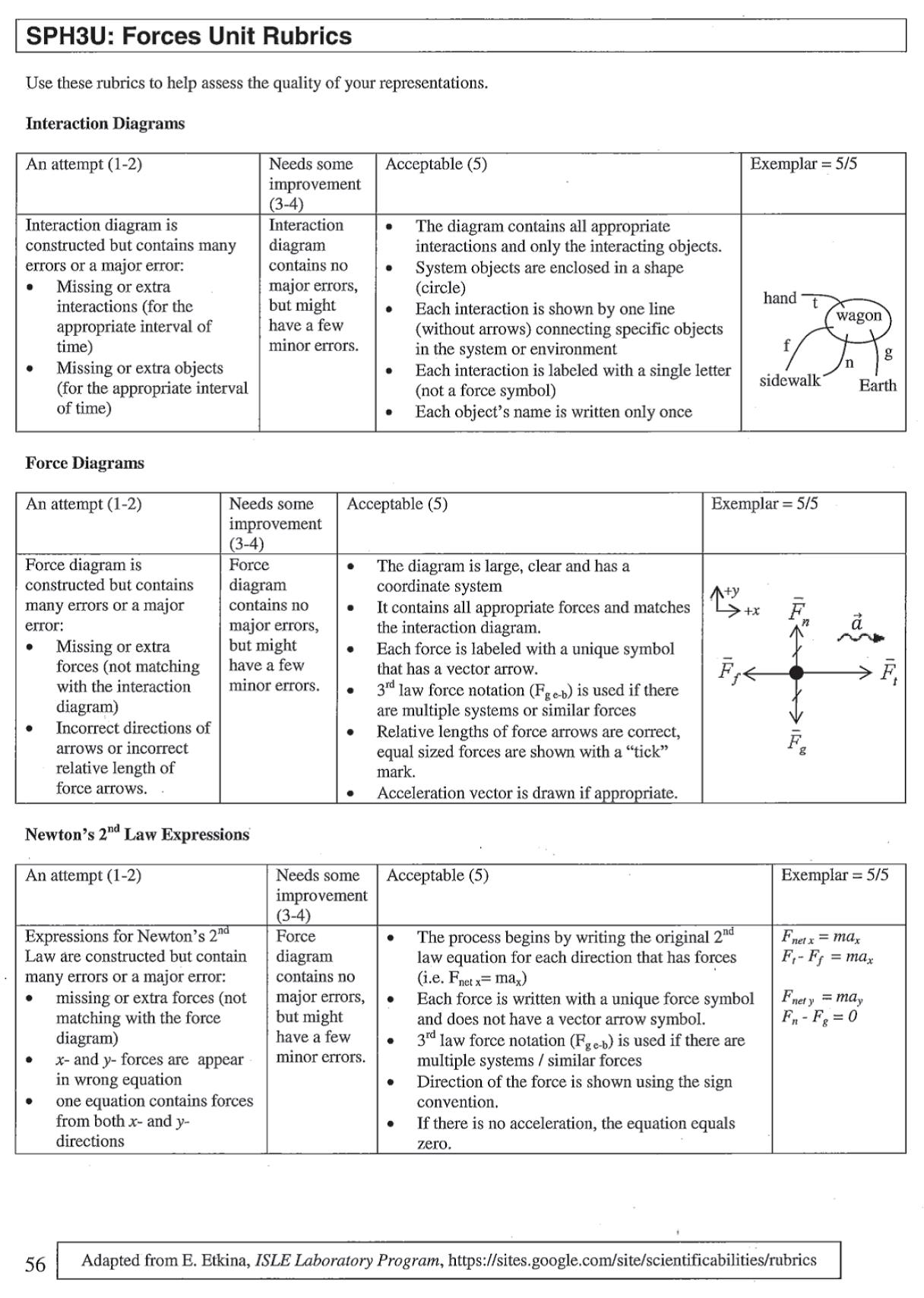

Our rubrics include an exemplar, a marking scale, and a list of major errors (under the Attempt column) and important details (under the Acceptable column). The message here is that skills are not acceptable until they are error free and top quality; we don’t want our students reinforcing poor quality work through thoughtless or faulty practice. When it comes time to introduce new skills, we refer students to the rubric to help them remember the important details. As students work through the unit and practice a skill, we ask them to refer to the rubric, mark any corrections and improvements using a different coloured writing tool, and assign a mark to each example of the skill. The different colour is very helpful. When I circulate, I can, at a glance, see what they need to work on and they also have a reminder for future studying (more metacognition!)
I wrote this article the day my grade 11 class was reviewing for their test on forces. In the class, we had an Atwood machine set up with a piece of paper towel taped under the cart.
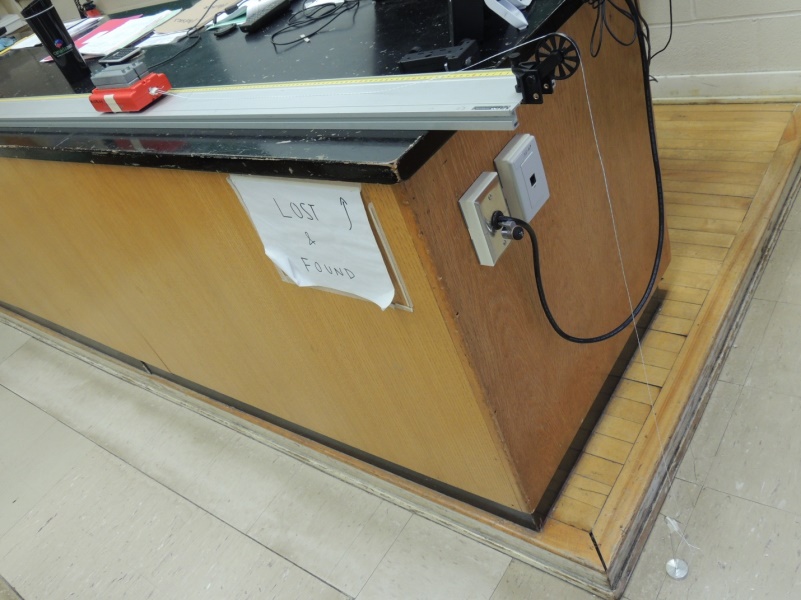

I pulled back the cart and released it. It sped up, the counterweight hit the floor and then it slowed down and stopped. Then I asked my students to complete the skill parts of a problem solution, but without any numbers so they don’t obsess over any calculations. The instructions are shown in the slide below and were revealed only one step at a time.
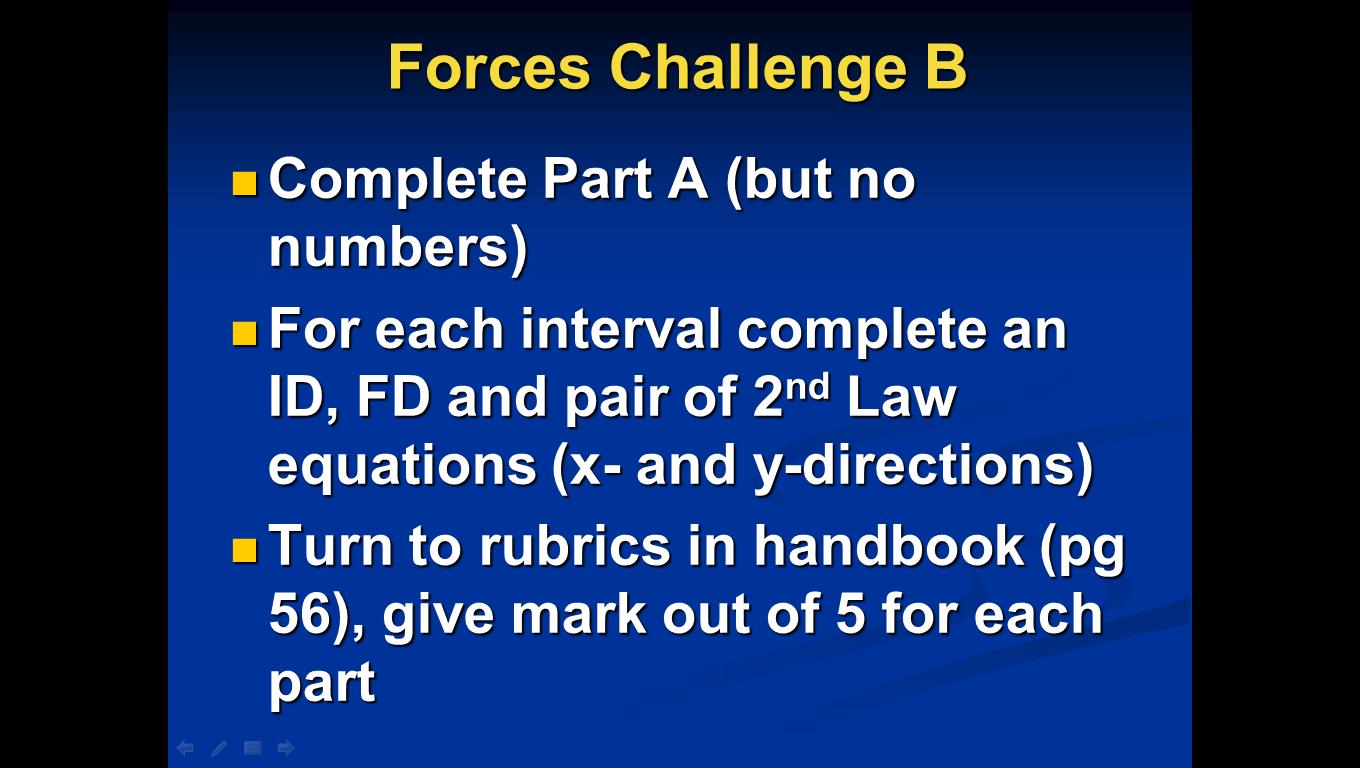

In the second bullet, I ask students to complete a force diagram (FD), an interaction diagram (ID), and the two component equations for Newton’s 2nd Law. Two examples of student work are shown below. Note the corrections and self-assessment written in the different colours.

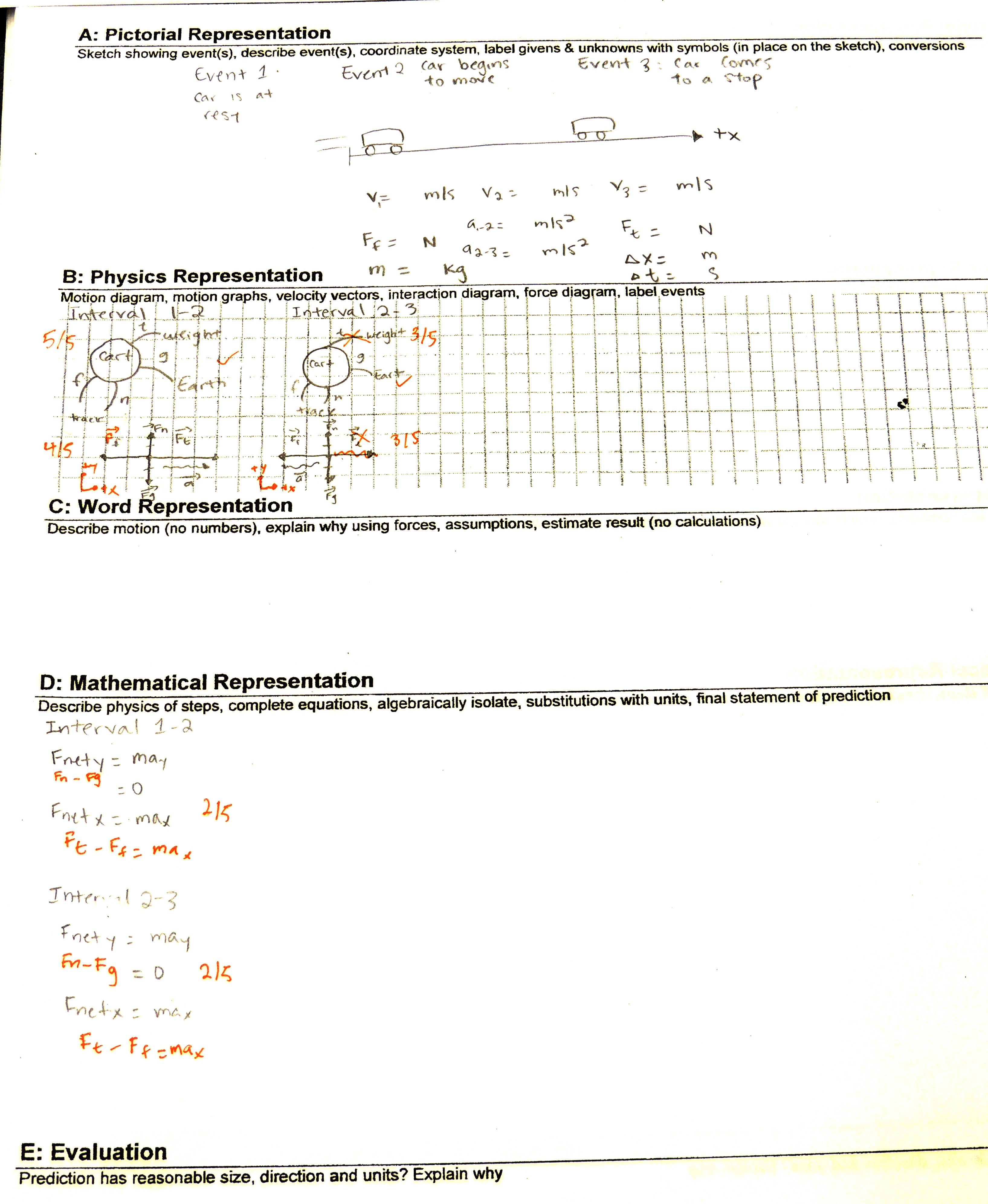

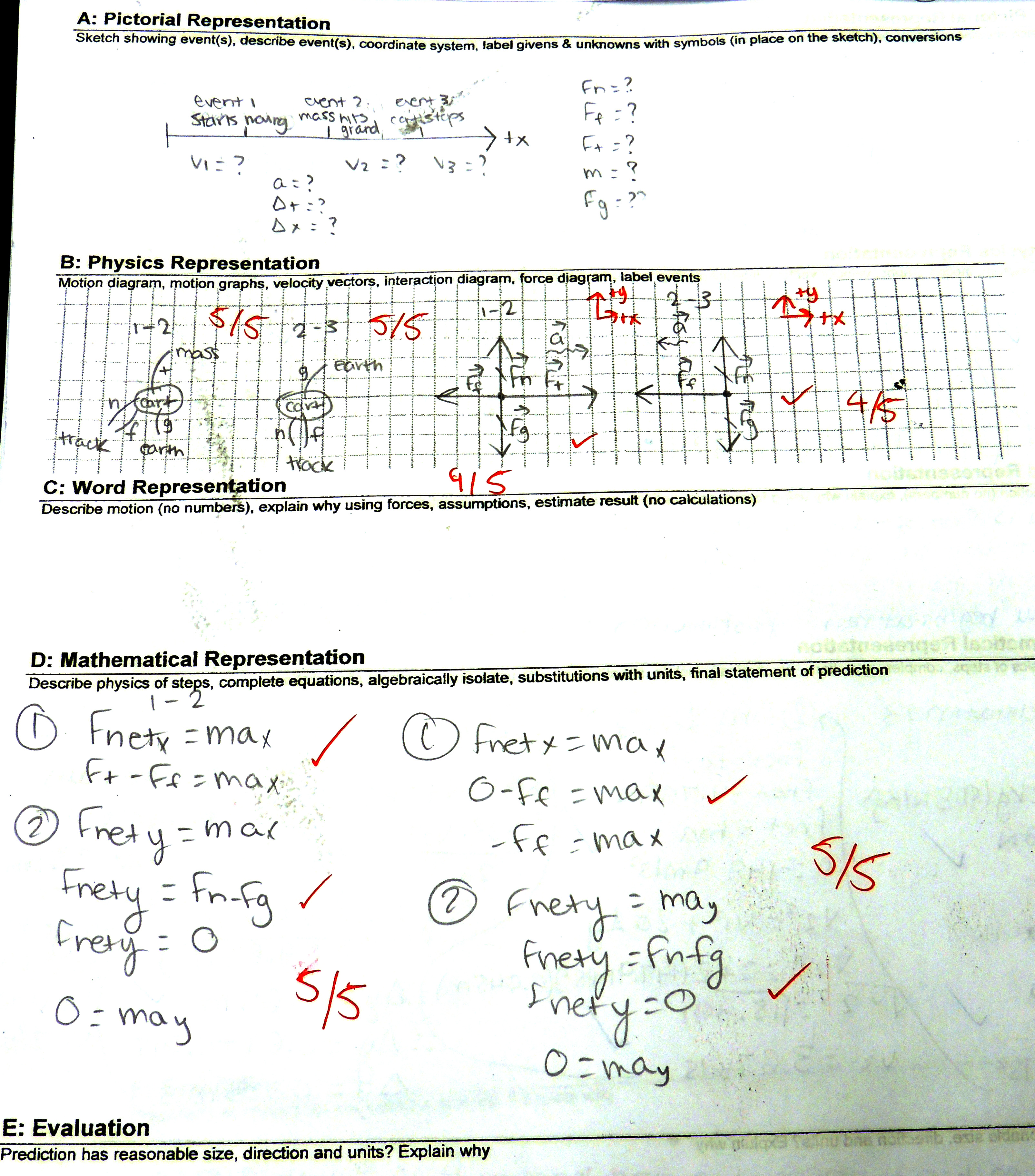
The use of skill rubrics has made a real difference in the learning of my students. It is now very rare to have a student produce a truly crap-tacular force diagram on a test or quiz (you know, the ones that look like wounded porcupines). It is also very common for flawless diagrams to be produced. Teach students to reflect on their learning and work. Give them the tools to help them improve. Students won’t improve unless you build explicit reflection and improvement opportunities into their learning.
Learn More
Tags: Pedagogy






